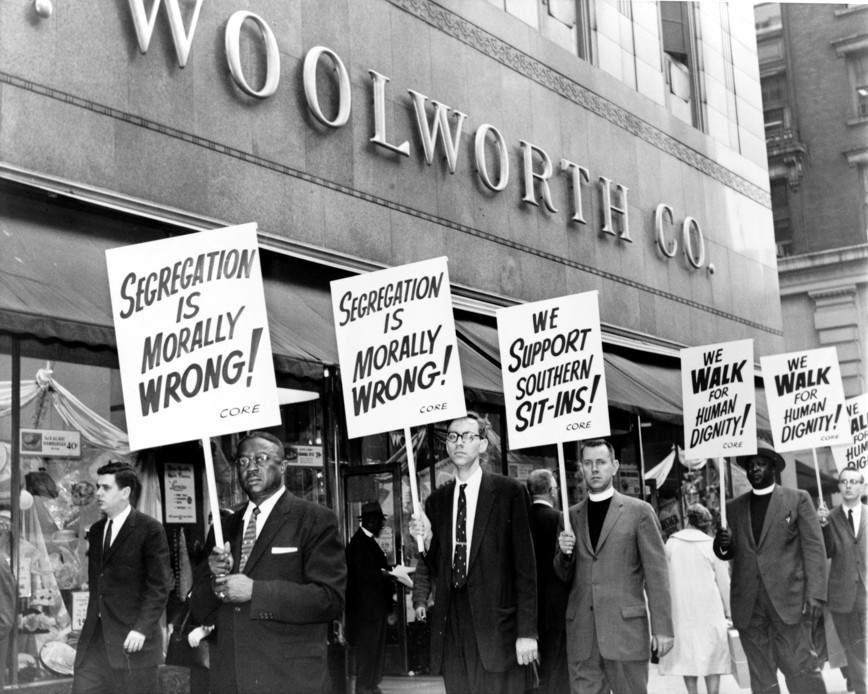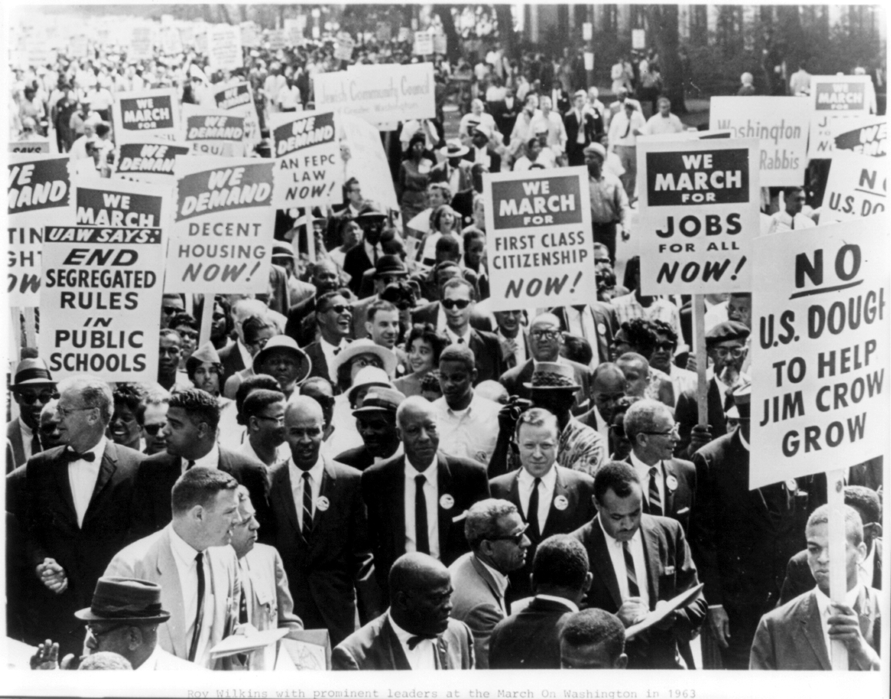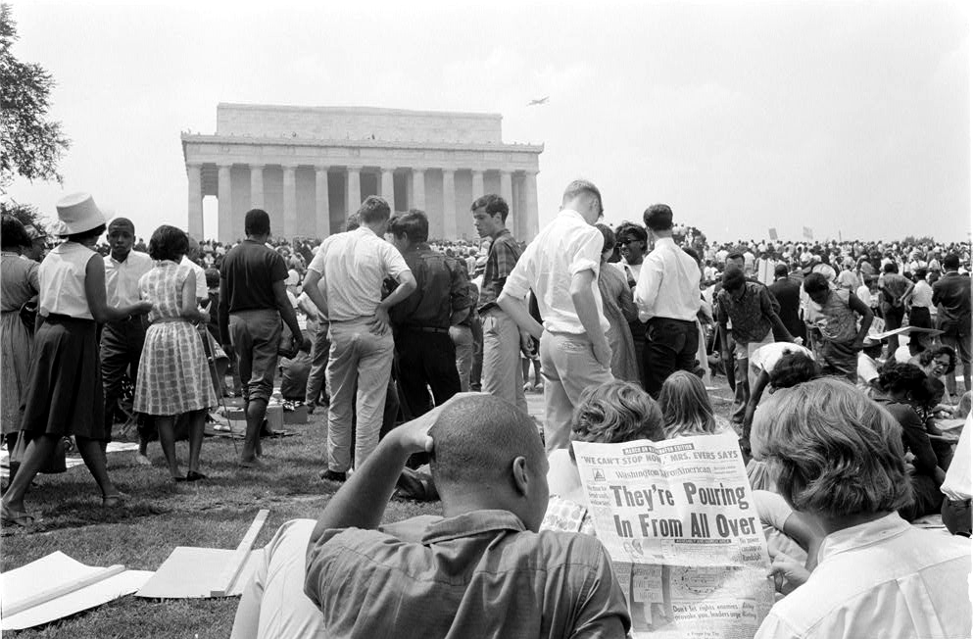|
Freedom
Riders challenged segregation in
bus terminal waiting rooms In 1961 groups called Freedom Riders organized busloads of blacks and whites willing to travel to cities in the South to protest against segregated bus stations. An earlier court case had already declared that interstate buses and stations could not be segregated. In many areas of the South, however, the law was ignored, and bus stations still had separate waiting rooms for whites and blacks. The bus of Freedom Riders shown below was going through Alabama. It was attacked by a mob of whites and set on fire. Everyone on board managed to escape the flames safely. Newspaper reports about the Freedom Riders impressed people nationwide with their courage and determination to keep challenging segregation. |
|
Protest
marches and demonstrations showed
wide public support for ending segregation Sit-ins and Freedom Riders won national attention in newspapers and television reports. The demonstration below was organized in New York City to show support for an end to segregation. |

|
1963:
The
March on Washington
The most famous demonstration of the Civil Rights movement was the 1963 March on Washington (below). More than a quarter of a million people of all races attended the protest march and demonstration in the nation's capital. |

|
Gathering
at the Lincoln Memorial
Rev. Martin Luther King, Jr., made his famous I Have a Dream speech from the steps of the Lincoln memorial, shown below with the marchers gathering around it. |

|
I
Have a Dream
In his powerful speech, Rev. King told the crowd that his challenge was not against America, but was in fact "deeply rooted in the American dream." Near the end, he quoted the famous words of the Declaration of Independence, and the lines of a patriotic American song: I have a
dream
that one
day this nation will rise up and
live out the true meaning of
its creed: "We
hold these truths to be self-evident,
that all men are created
equal . . ."
This will be the day when all of God's children will be able to sing with new meaning, "My country 'tis of thee, sweet land of liberty, of thee I sing. Land where my fathers died, land of the Pilgrims' pride, from every mountainside, let freedom ring." |
|
The
Civil Rights Act of 1964 ended
segregation and all Jim Crow laws The March on Washington helped build support for the Civil Rights Act of 1964. This important law passed by Congress banned discrimination in all public places. Jim Crow laws that created segregation were now officially outlawed. |
|
Civil Rights Act of
1964 |
|
Protecting
employment (job) rights
The Civil Rights Act of 1964 also bans employers from racial discrimination in hiring or firing decisions. As the exact wording of the law was being discussed in Congress, a decision was made to include protection for women's employment rights as well. |
|
It shall be an unlawful employment
practice for
an employer . . . to fail or refuse to hire or to discharge
any individual . . . because of such individual’s race, color,
religion, sex, or national origin. |
The photos are from the Library of Congress.
Some have been edited or resized for this page.
|
Copyright Notice
Copyright 2010, 2020 by David Burns. All rights reserved. As a guide to the Virginia Standards of Learning, some pages necessarily include phrases or sentences from that document, which is available online from the Virginia Department of Education. The author's copyright extends to the original text and graphics, unique design and layout, and related material. |